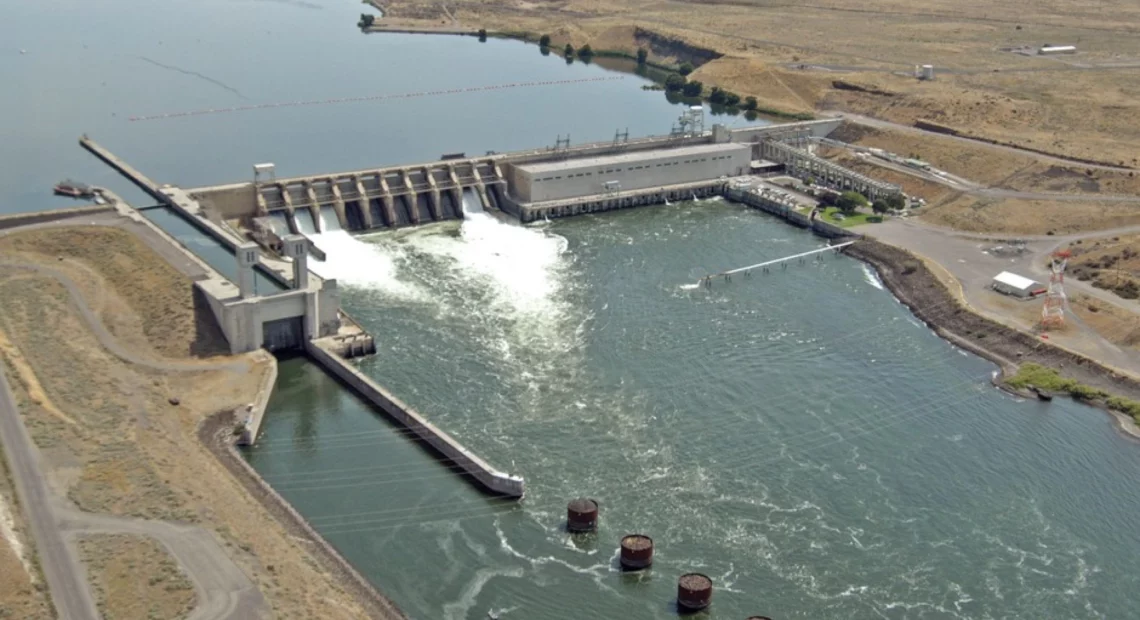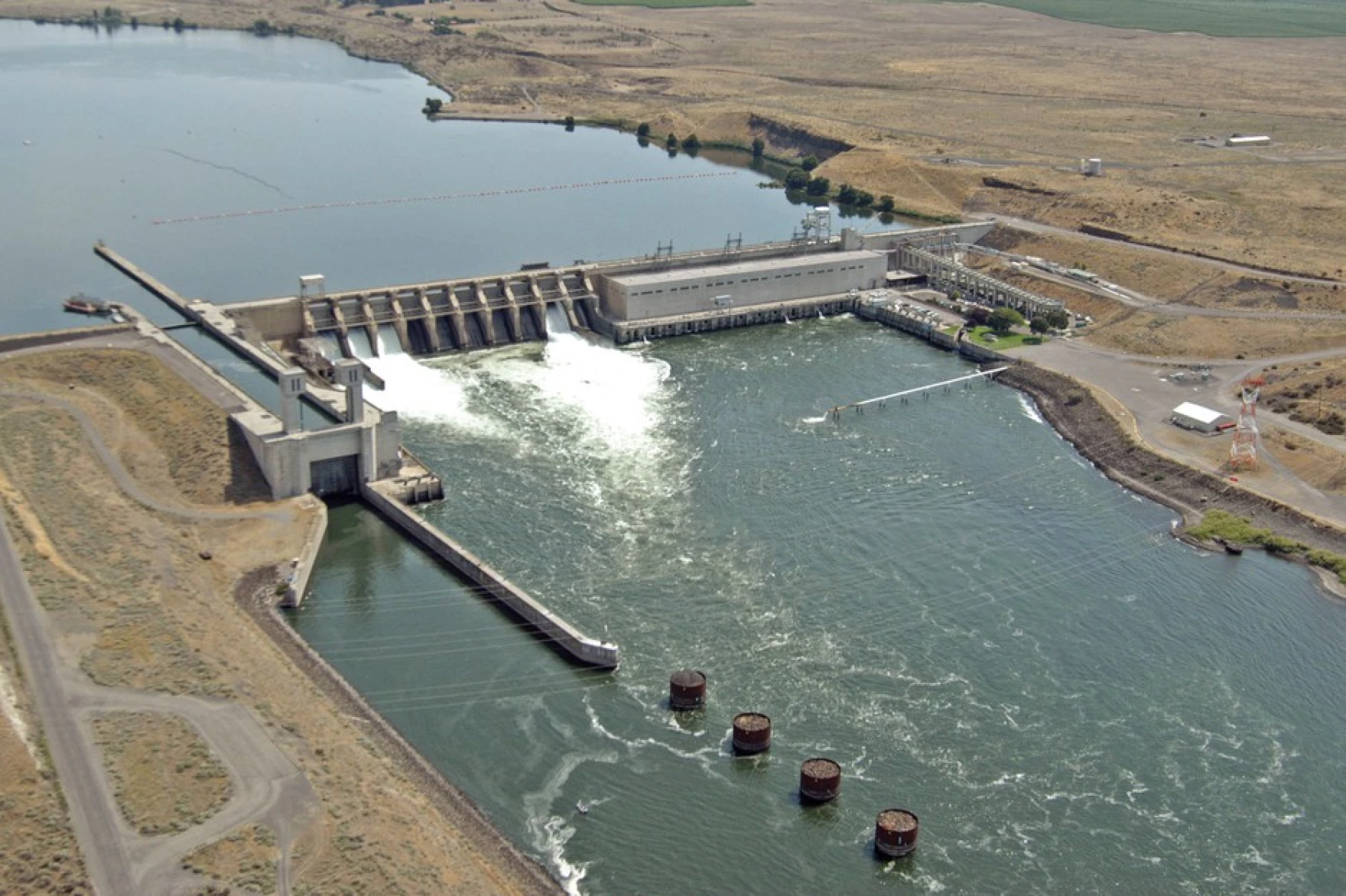
Historic agreement seen as a harbinger to Snake River dam removal
Listen
(Runtime 0:52)
Read
After decades of courtroom drama, a document leak and years of negotiation, federal officials agreed with six Northwest tribes to restore salmon, build-up clean energy and begin studying how to replace services the Lower Snake River dams provide.
This historic agreement won’t ensure the removal of the four Lower Snake River dams – but it will provide a pathway to better understand what is needed to do it.
“The historic agreement charts a new course. One that preserves options, is responsive to regional leaders and ensures that Congress has the information it needs to best invest in and increase the resilience of the Pacific Northwest,” said Brenda Mallory, who chairs the White House Council on Environmental Quality.
Tribes and biologists have argued salmon in the Snake will not survive without removing the four dams on the river that runs through southeastern Washington and part of Oregon and Idaho.
“The threat of extinction of species on our watch is something that we should be about to work through and be able to determine that we can do things and we can make changes,” said Nez Perce Tribal Chairman Shannon Wheeler.
With this agreement, the federal government will help build one to three gigawatts of tribally-sponsored clean energy projects that could replace energy currently supplied by the dams.
Before now, said Yakama Nation Chairman Gerald Lewis, the region’s energy generation has been built on the backs of tribes.
“This new era of energy development is an opportunity to do better,” Lewis said.
The studies will provide Congress with information on replacing transportation, irrigation and recreational benefits from the dams. The administration did not provide a stance on whether to breach the dams. Instead, leaders said these studies will provide critical information for Congress to make that decision.
A recent report from the Columbia River InterTribal Fish Commission, 10 years in the making, found $1 billion in backlog of projects to improve hatchery infrastructure, reduce predation, improve passage for fish and lamprey, dredge and improve estuary habitats, said Corinne Sams, CRITFC Fish and Wildlife Commission chair for CRITFC and also a Board of Trustees member for the Confederated Tribes of the Umatilla Indian Reservation.
“For far too long, preventing salmon extinction has been viewed as a cost,” she said. “Salmon restoration needs to be considered in this investment in our shared future.”
Environmental groups applauded the agreement, calling it a path forward to breaching the four dams: Ice Harbor, Lower Monumental, Little Goose and Lower Granite.
“Simply put, no recovery efforts have or will prevail while the lower Snake River dams continue to be the largest contributor of human-caused fish mortality,” said Brian Brooks, executive director of the Idaho Wildlife Federation.
This long-awaited agreement comes after a two year pause in litigation over the federal hydropower operation on the Columbia and Snake rivers and its effect on endangered and threatened salmon and steelhead. That litigation has gone on for decades.
“We are now on a path to breach the four Lower Snake River dams,” said Earthjustice senior attorney Amanda Goodin in a statement. “This marks a turning point in our decades-long litigation.”
In 2016, U.S. District Judge Michael Simon had ordered federal agencies to consider dam removal. This decision was the fifth time a federal judge had asked federal agencies to reassess their plans for protecting threatened and endangered salmon and steelhead.
“Despite billions of dollars spent on these efforts, the listed species continue to be in a perilous state,” Simon wrote in his decision. “The [Federal Columbia River Power System] remains a system that ‘cries out’ for a new approach.”
Stil, federal agencies decided not to remove or alter the four Lower Snake River dams, citing the socioeconomic needs of the region.
Then in 2022, the National Oceanic and Atmospheric Administration came out with a report that recommended breaching the four dams on the Lower Snake so fish could recover to “healthy and abundant” populations.
In the fall of 2023, the Biden administration directed federal agencies in a presidential memorandum to restore abundant wild salmon populations to the Columbia River Basin.
Over the past two years, this litigation stay included closed-door talks between parties, a common way for all invested to freely discuss problems and solutions.
Dam supporters decried the “lack of transparency.” After a draft proposal recently leaked, some intervening defendants in the case began talking about the confidential information, including at a Congressional hearing earlier this week.
At the hearing, Neil Maunu, executive director with Pacific Northwest Waterways Association, said his group was tired of not being represented in the mediation process.
“We could actually get behind a lot of what is in this document, but the rest – the parts that were negotiated in secrecy, without proper stakeholder input, by those of us who live and work in this region are show-stoppers. This is a failed process,” Maunu said at the hearing.
However, the tribes and the federal government said this is how the process should work, especially as sovereign governments that entered into treaties of 1855. Tribes ceded millions of acres of land to the U.S. government in exchange for the right to hunt, gather and fish in all usual and accustomed places.
“Coming together under mutual agreement for mutual benefit – and that’s what will happen with our treaty and that’s the way we expect the federal government to respond,” Wheeler said. “We expect to be as obligated to the response as the United States of America is.”
















